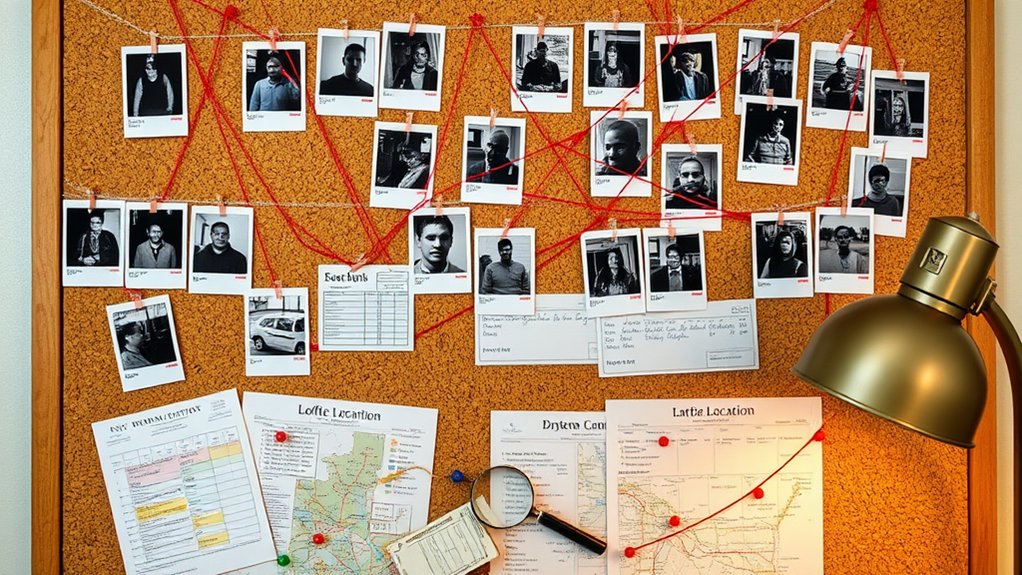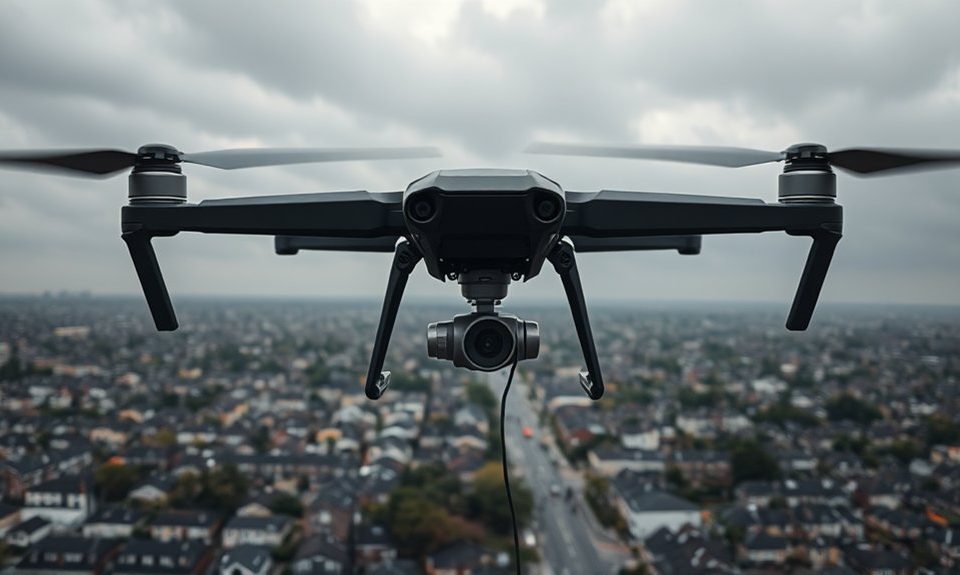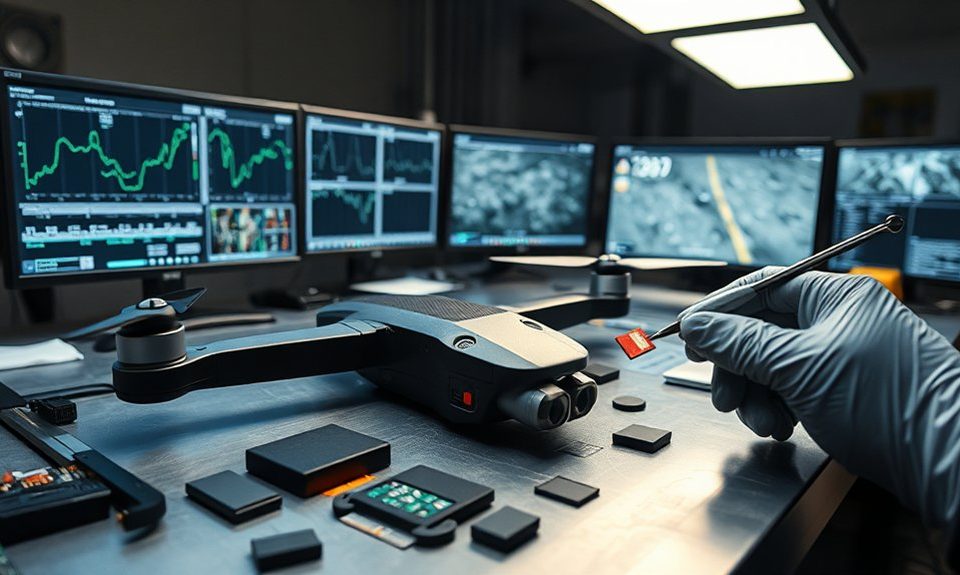The systematic search for missing persons follows a structured five-step investigative approach. Investigators begin with thorough information gathering through client interviews and document collection. Digital investigation analyzes social media patterns and online footprints. Field surveillance tracks physical movements and contacts. Timeline analysis reveals behavioral patterns and gaps. Legal compliance guarantees proper documentation throughout. These fundamental steps lay the groundwork for a deeper understanding of thorough missing persons investigations.
Key Takeaways
- Conduct detailed interviews with family and associates while gathering recent photographs, social media profiles, and financial records of the missing person.
- Analyze digital footprints across social media platforms, email accounts, and phone records to establish patterns and potential whereabouts.
- Implement strategic surveillance at key locations, documenting movements and interactions while building relationships with potential witnesses.
- Create a comprehensive timeline by cross-referencing digital activities with physical movements to identify crucial gaps or inconsistencies.
- Document all findings through proper legal channels, maintaining confidentiality while preserving evidence according to established protocols.
Initial Case Assessment and Information Gathering

When a person is reported missing, the initial assessment and information gathering phase serves as the critical foundation for the entire investigation. Investigators must conduct thorough client interview strategies to collect essential details about the missing individual, including physical description, last known location, and recent activities.
The process involves a systematic case priority assessment to determine time sensitivity and potential risks. Investigators evaluate factors such as the person’s age, medical conditions, and circumstances of disappearance. They gather recent photographs, social media profiles, phone records, and banking information.
Key contacts are identified and documented, including family members, friends, coworkers, and associates who may provide valuable leads. This extensive baseline of information enables investigators to develop effective search strategies and establish clear investigative priorities. Similar to infidelity cases, investigators maintain professional confidentiality throughout the process while gathering comprehensive evidence for the client.
Digital Investigation and Social Media Analysis
Modern missing persons investigations rely heavily on digital footprints and social media activity to establish patterns, connections, and potential whereabouts. Digital forensics experts analyze online behaviors across multiple platforms to construct timelines and identify essential leads.
| Platform Type | Key Data Points | Investigation Focus |
|---|---|---|
| Social Media | Last login times | Activity patterns |
| Email accounts | Contact lists | Communication networks |
| Cloud storage | Location data | Movement tracking |
| Search history | Recent queries | Intent indicators |
Investigators examine device metadata, GPS coordinates, and timestamp information to map a person’s digital presence. Social media analysis reveals relationships, frequented locations, and recent interactions that may provide breakthrough information. Advanced tools extract deleted content, cached data, and cross-platform correlations to build detailed digital profiles of missing individuals. Digital forensic techniques enable investigators to uncover vital evidence in both corporate and personal cases.
Field Work and Physical Surveillance Techniques
Effective field work and physical surveillance form the backbone of missing persons investigations, requiring systematic observation and documentation of key locations, routines, and contacts. Investigators must establish strategic observation points near the last known locations and potential areas of interest, utilizing surveillance equipment such as cameras and recording devices discreetly. Professional investigators rely on acute observation abilities to identify crucial details that may lead to breakthroughs in locating missing individuals. Various observation methods include stationary surveillance from vehicles, mobile foot surveillance, and coordinated team monitoring of multiple locations. Investigators document patterns of movement, interactions with known associates, and any deviations from established routines. They also photograph relevant locations, gather physical evidence, and maintain detailed logs of all observations. When conducting interviews in the field, investigators must remain alert to environmental cues and body language while building rapport with potential witnesses and information sources.
Building and Verifying Timeline Patterns

Three critical elements define the construction of timeline patterns in missing persons cases: establishing confirmed locations and activities, identifying gaps in the chronology, and corroborating witness accounts with physical evidence. Timeline analysis requires methodical documentation and verification of each data point.
Key aspects of pattern recognition in missing persons investigations include:
- Cross-referencing digital footprints with physical movements
- Analyzing recurring behaviors and deviations from normal routines
- Mapping relationships between time-stamped events and witness statements
- Identifying inconsistencies in collected testimonies and evidence
- Documenting unexplained periods of inactivity or communication gaps
Investigators must maintain strict chronological order while building timelines, ensuring each verified event connects logically to the next. This systematic approach helps reveal patterns that may indicate the person’s last known whereabouts or potential scenarios leading to their disappearance.
Cutting-edge technology like geolocation tracking and facial recognition software significantly enhances the accuracy of timeline construction and verification.
Legal Compliance and Documentation Protocols
When conducting missing persons investigations, law enforcement agencies must strictly adhere to established legal protocols and documentation requirements that govern evidence collection, witness interviews, and case management. These legal obligations include maintaining detailed records of all investigative activities, preserving chain of custody for physical evidence, and ensuring proper authorization for searches and surveillance.
Investigators must document every step of their investigation through standardized forms, photographs, recordings, and written reports. This thorough documentation serves multiple purposes: meeting legal obligations, supporting potential court proceedings, enabling case reviews, and facilitating collaboration with other agencies. Documentation requirements also extend to maintaining confidentiality of sensitive information, securing proper warrants when necessary, and following jurisdictional procedures for missing persons cases.
Professional investigators should prioritize ethical standards compliance while gathering evidence to ensure admissibility in potential custody or court proceedings.
Frequently Asked Questions
How Much Does a Typical Missing Person Investigation Cost?
Missing person investigation rates typically range from $50-200 per hour, with total costs between $1,000-10,000 depending on cost factors like case complexity, travel requirements, and duration of search.
What Percentage of Missing Person Cases Are Successfully Solved?
Success rates for missing person cases vary by jurisdiction, with national case statistics showing approximately 95-97% of cases being resolved, though resolution doesn’t always mean locating the person alive.
Should I Hire Multiple Private Investigators Simultaneously?
Hiring multiple investigators simultaneously can lead to inefficient case management and conflicting approaches. Professional investigators typically prefer exclusive arrangements to maintain clear investigator collaboration and avoid duplicating efforts.
Can I Continue Searching While Police Are Investigating?
Personal involvement in a missing person case can continue alongside police investigations. Collaboration efforts between families and law enforcement often yield better results when conducted respectfully and with proper coordination.
How Long Should I Wait Before Hiring a Private Investigator?
The decision to hire a private investigator depends on several factors to evaluate, including emotional readiness, police progress, available resources, and urgency of the case. Most experts recommend waiting 2-4 weeks.
Conclusion
Successful missing persons investigations require meticulous attention to detail, thorough documentation, and strict adherence to legal protocols. By systematically following established procedures – from initial intake through digital analysis, field surveillance, and timeline construction – investigators can maximize the probability of locating subjects while maintaining case integrity. A disciplined, methodical approach combined with meticulous documentation remains essential for both investigative success and legal compliance.





